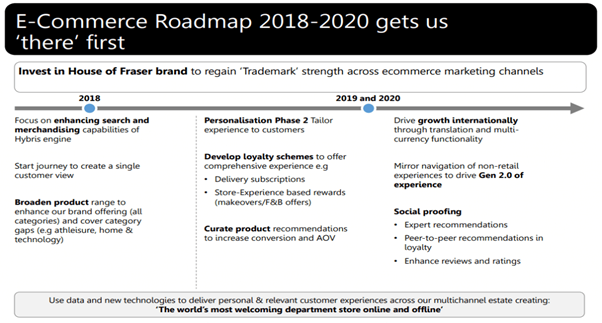Latest
Can House of Fraser survive with a digital transformation?
Last week, House of Fraser announced that it will close more than half of its UK stores, putting as many as 6,000 jobs at risk.
It was stunning news for a department store that has been around for 169 years. But facing a store sales decline of more than 7% last year and a 40% drop in operating profits, the company’s leadership had few options.
Alex Williamson, House of Fraser’s CEO, explained that drastic action was taken in an effort to save a business that would likely have imploded otherwise.
“A decision to close this number of stores is not done lightly,” he explained. “This is really grim. It is a highly emotional, highly regrettable situation that none of us either imagined or wanted to see happen, but there is simply no alternative.”
“The retail industry is undergoing fundamental change and House of Fraser urgently needs to adapt to this fast-changing landscape in order to give it a future and allow it to thrive,” House of Fraser chairman Frank Slevin told investors. “Our legacy store estate has created an unsustainable cost base which, without restructuring, presents an existential threat to the business.”
To address this, House of Fraser is asking investors to approve a restructuring that includes a transformation plan consisting of:
- Creating a smaller brick-and-mortar footprint that is more focused.
- Becoming a “house of brands”.
- Orienting its business towards ecommerce.
The latter, of course, is arguably the most important part of the retailer’s plan. In an investor presentation, House of Fraser states that it wants to create an “exceptional online store with increasing levels of personalisation, market place credentials delivered seamlessly alongside in-store.”
To that end, it has laid out an ecommerce roadmap that in 2018 calls for broadening its range of products, enhancing its existing search and merchandising capabilities, and beginning to create a single customer view. In 2019 and 2020, it intends to add additional personalisation, loyalty schemes, product curation, social features and support for international sales.

In an attempt to mitigate the effects of its store closures on its online business, House of Fraser says it will, among other things, significantly increase its above-the-line marketing spend and up its use of paid channels “to increase online presence and message relevance in store closure areas to offset any drop in brand awareness.”
Too little, too late?
House of Fraser faces two big questions about its transformation plan. The first: is it enough to right the ship? The second: is there enough time to pull it off?
The company’s ecommerce roadmap certainly mentions all the right things. But retailers with thriving online businesses have been investing in search, personalisation, single customer views, and the like, for years. As a result, these are today requirements for having a viable large-scale ecommerce business.
If House of Fraser can improve its capabilities in these areas, it will arguably have the opportunity to compete. But catching up to retailers with more advanced capabilities realistically won’t give it a significant competitive advantage.
Complicating matters is the fact that House of Fraser is working from a position of weakness, not strength. The worst possible time to embark upon a digital transformation is during a period of financial strain, which can affect everything from a retailer’s ability to effectively compete in paid marketing channels to its ability to recruit digital talent.
With all this in mind, although House of Fraser’s transformation plan seems sensible, there are many reasons to question whether or not it will actually be able to pull it off and its story is a powerful reminder that retailers, and brands, cannot afford to wait to respond to the massive shifts that digital has caused and will continue to cause in the way consumers shop.
For more information, or to talk to us about your digital marketing, please email info@summitmedia.com.
Ready for change? Let's talk
Speak to Summit